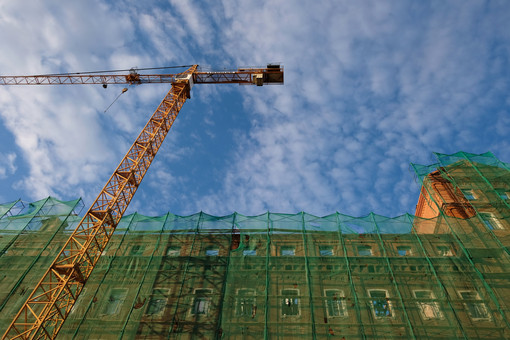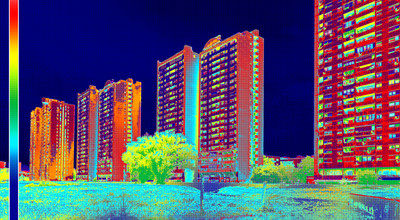Written by Anita Derjanecz, Managing Director of REHVA
On 14 October, the European Commission published the Renovation Wave Strategy setting ambitious targets to reach within 10 years. The strategy aims at doubling the current annual renovation rate (to 2%), achieving 18% decrease in total energy demand and 69% decrease in CO2 emission, wile 35 million buildings should undergo deep energy renovation. This transformation of the EU building stock is a one-time opportunity to prompt the much-needed transition to healthy buildings in Europe at the same time.
We must build buildings for people
Buildings should serve the health, comfort, and wellbeing of occupants. We spend +90% of our lives indoor, thus indoor environment quality (IEQ) has a major impact on our health and life. Unfortunately, these basic principles are often ignored when constructing buildings or developing EU policies targeting energy renovation.
REHVA experts - scientists and practitioners in the field of building services engineering - have been advocating healthy indoor climate along energy efficiency for decades. We seal our buildings for energy performance so we must pay particular attention on indoor air quality. Defining minimum IEQ criteria to be reached during deep energy renovation should be widely acknowledged and practiced in policies and plans for deep energy renovation.
Well-designed and operated buildings provide clean air, comfort, and protect our health. The COVID-19 pandemic demonstrates the importance of ventilation in mitigating virus spread. Pandemics have always transformed society in human history. This crisis is changing how we value indoor air quality and how decision makers assess the costs of not providing healthy and safe indoor environments. The lessons learned from this pandemic should inform the Renovation wave policies and their implementation.
The rise of indoor climate quality in European building policies
The past years saw raising awareness of IEQ and health aspects linked to building performance and energy renovation at EU policy level. During the latest EPBD revision, REHVA, along several stakeholders, called for considering these aspects of building performance and the revised directive mentions IEQ, requesting member states to tackle it in their long-term renovation strategies. We also have a new EN/ISO standard on IEQ parameters linked to the EPBD. However, these are not stringent enough to ensure an immediate effect on the Renovation wave.
Other EU policies overseen by DG Environment or DG Growth also tackle health and air quality aspects (Levels scheme, construction products or source control), but these are fragmented and we need an overarching policy for healthy buildings. The EPBD is the best available EU policy framework to address indoor climate quality as part of building performance. The unexpected revision of the directive in 2021 mandated by the Renovation wave provides an opportunity to strengthen IEQ criteria and steer the healthy buildings transition.
This is also requested by the European Parliament in its report “Maximising the energy efficiency potential of the EU building stock”, which stresses that building renovation projects should always lead to healthy buildings and consider indoor environmental quality. It emphasises the revision of standards for air quality, indoor health, and comfort, including daylight and mechanical ventilation acknowledging that these contribute to health and productivity, enhance work or learning performance and ensures significant welfare savings. The report targets the Renovation wave and the related EU policy making, but it is not binding. MEP Miapetra Kumpula-Natri (S&D) emphasized the need to strive for healthy buildings at the policy conference “Renovation wave to deliver healthy buildings in the post-COVID19 Europe” organised by REHVA and called both Commission and Member State legislators to consider these issue when developing building renovation policies.
Healthy buildings and the Renovation Wave
High air quality and environmental standards is one of the seven key principles for energy renovation laid down by the strategy. However, indoor climate quality is considered mostly in relation to energy poverty, the strategy seems to miss the point that inadequate IEQ is a frequent problem in buildings affecting everybody’s life and health in our society.
Still, the Renovation Wave is a unique opportunity to kick-start a just healthy building transition in Europe - if implemented with ambition and at high quality. The focus on public buildings and vulnerable societal groups allows for a fair transition to a healthy, decarbonized, and digital building stock, where public buildings lead by example.
The strategy defines schools, hospitals, and public buildings as the first target areas of renovation. This enables healthy indoor climate for the most vulnerable, in often neglected and worst performing building types across Europe. Bad indoor air quality in schools has measurable negative impact on pupils’ and students’ learning performance. Ensuring proper ventilation and introducing CO2 monitoring in classrooms should be mandatory and a prerequisite for funding renovation projects.
A significant part of the European hospital stock was built in the 1960-70’s, the renovation of these buildings is long overdue. Improving indoor climate quality in healthcare facilities and nursery homes is inevitable considering the COVID-19 pandemic that is teaching a sad lesson about the need of clean air. Besides, thermal comfort and daylight reportedly contribute to the recovery and wellbeing of patients or elderly people.
Offering healthy buildings with the Renovation wave is also a better selling point in the residential sector, where convincing owners about energy renovation is a challenge. Selling good indoor climate quality and comfort with decreased energy need sounds much easier, can increase public acceptance, and motivate investment in the energy renovation of homes.
Europe has a never-seen opportunity to improve the health and wellbeing of its citizen through the Renovation wave while delivering on climate and energy goals. All stakeholders should mobilise to make this happen.



